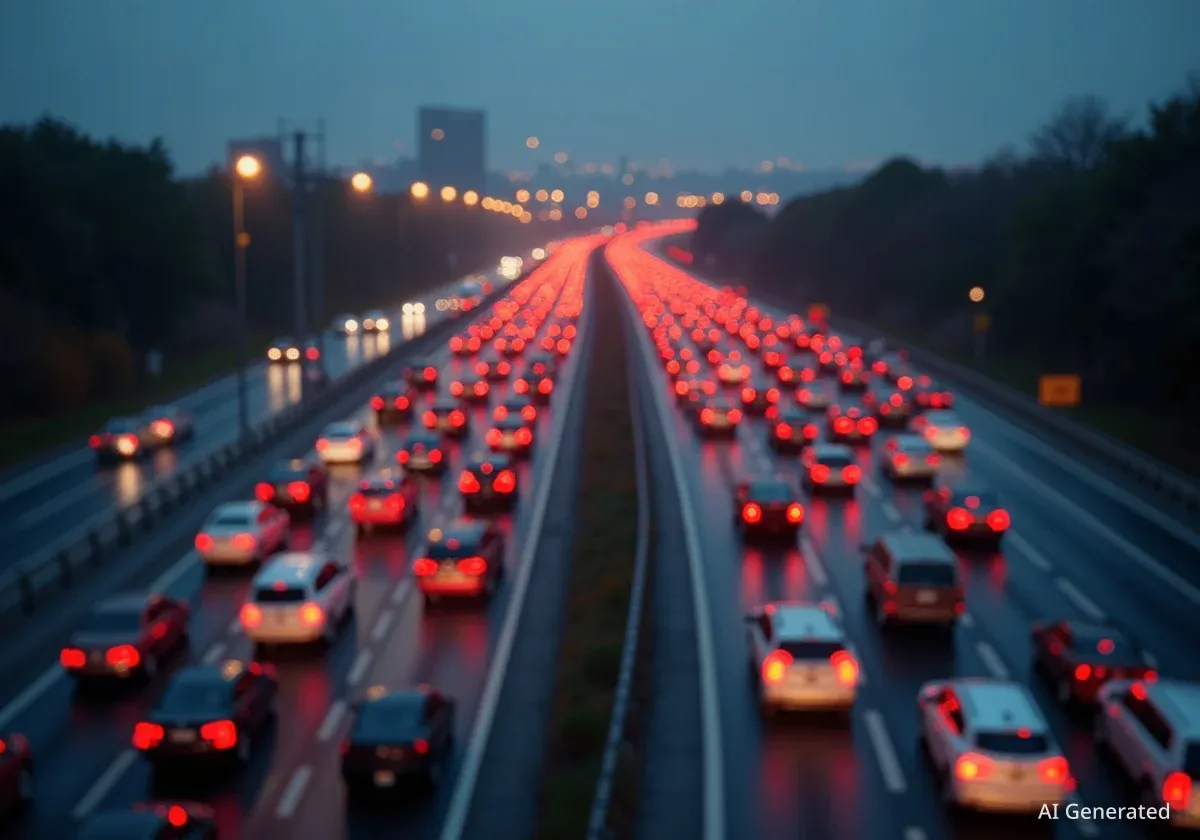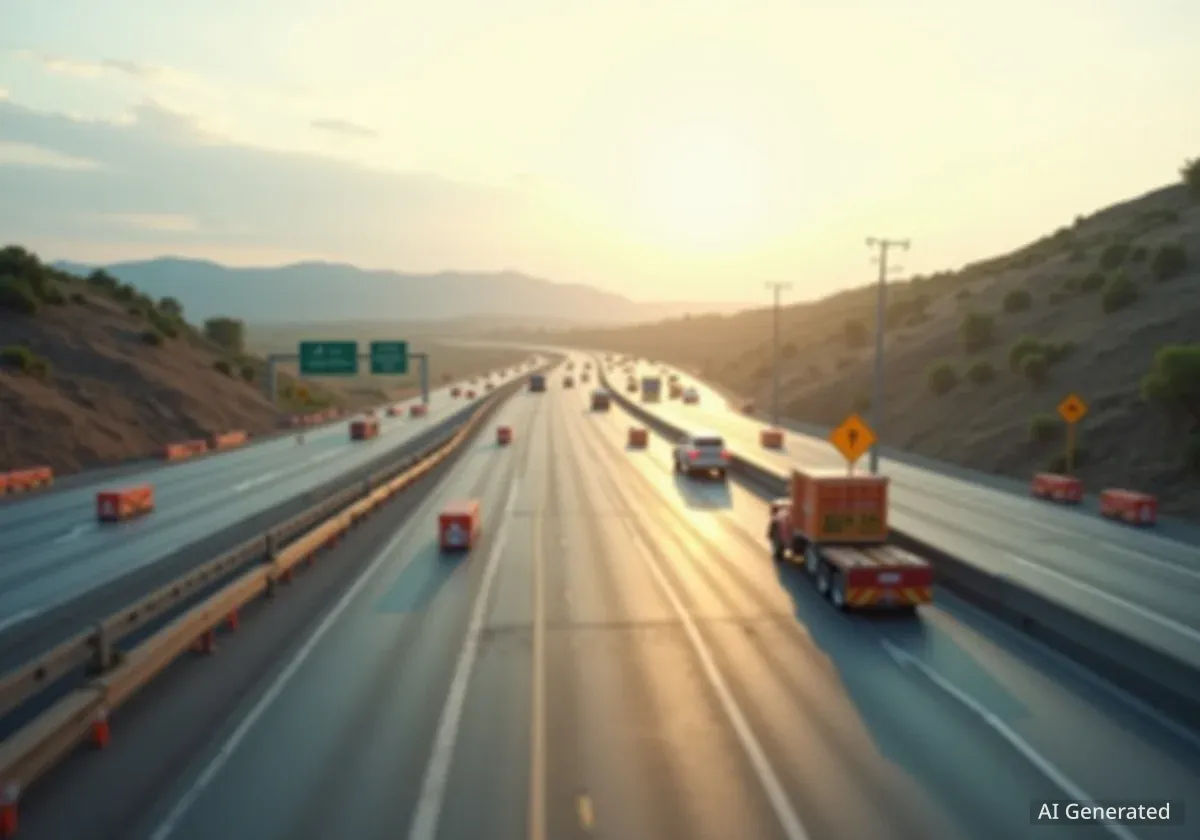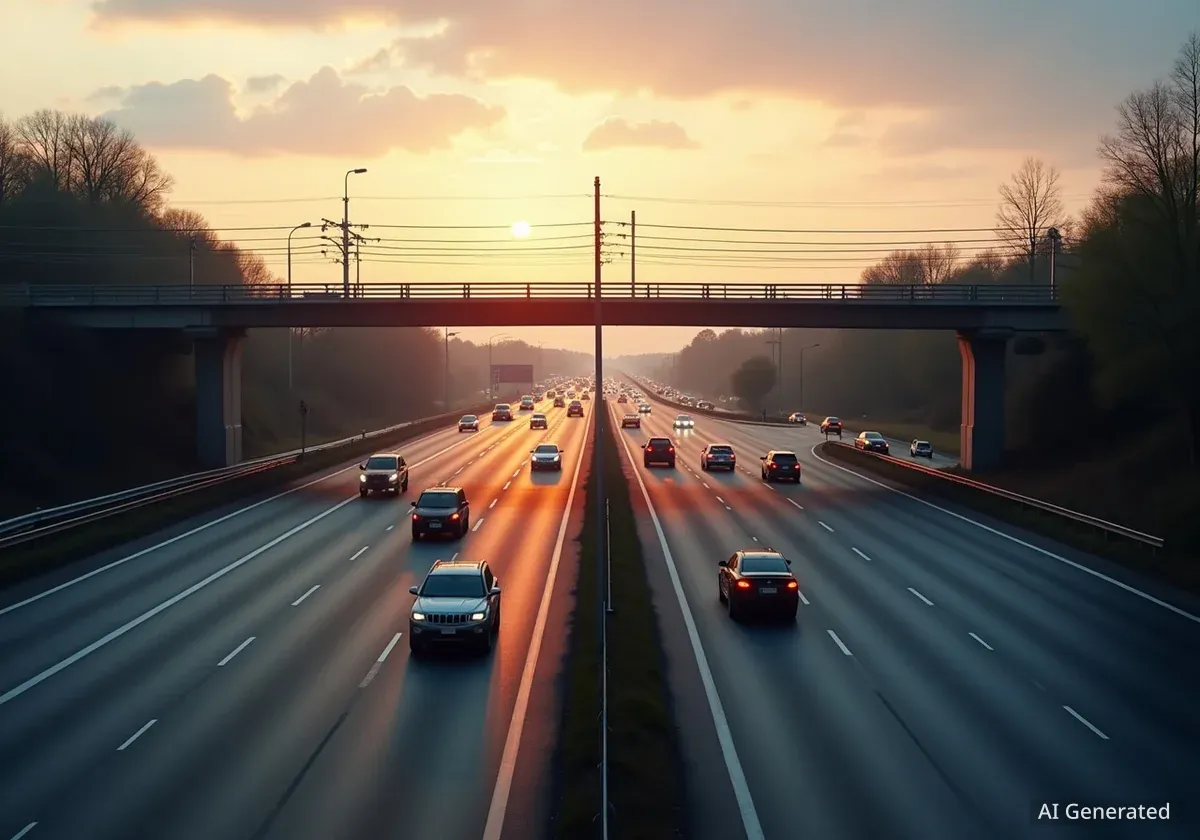Drivers in the Puget Sound region should prepare for significant traffic disruptions over the upcoming weekend of October 9-10. Major construction projects are scheduled for both Interstate 5 and Interstate 405, leading to multiple lane closures that will impact travel throughout the Seattle metropolitan area.
The work is part of ongoing infrastructure maintenance efforts, including the extensive "Revive I-5" program. The closures coincide with major sporting events, creating the potential for severe congestion and extended travel times for commuters and event attendees.
Key Takeaways
- I-5 Southbound: Two lanes will be closed as part of the "Revive I-5" project, significantly reducing capacity on a primary north-south corridor.
- I-405 Construction: Concurrent road work is also planned for I-405, compounding regional traffic issues.
- Event Overlap: The closures are scheduled during a weekend with both Mariners baseball and University of Washington football games, adding thousands of travelers to the affected routes.
- Official Advice: Transportation officials urge drivers to plan ahead, use public transit, or find alternative routes to avoid the most congested areas.
Details of the I-5 Southbound Closures
The primary source of the anticipated delays is the scheduled work on Interstate 5. The Washington State Department of Transportation (WSDOT) will close two southbound lanes for the entire weekend, starting late Friday night, October 9, and continuing through early Monday morning, October 11.
These closures are a component of the multi-year "Revive I-5" initiative, a comprehensive program aimed at rehabilitating the aging freeway. The work involves replacing worn expansion joints, repaving damaged sections of roadway, and performing critical maintenance on bridge structures like the Ship Canal Bridge.
Understanding the Revive I-5 Program
"Revive I-5" is a long-term WSDOT project addressing decades of wear and tear on one of Washington's most critical transportation arteries. The freeway, originally constructed in the 1960s, carries over 250,000 vehicles through Seattle on an average day. The program focuses on preserving the infrastructure to ensure its safety and viability for years to come, but requires significant lane closures to complete the work safely.
Scope of the Weekend Work
This weekend's project will focus on a critical stretch of southbound I-5. While the exact location can vary, these projects often target the area between Northgate and the downtown Seattle core. Crews will be working around the clock to remove old concrete panels and pour new ones, a process that requires extended time for the material to cure properly.
Reducing the freeway to just two lanes through this corridor is expected to create backups extending for several miles. WSDOT models often predict that travel times through the construction zone could be double or triple the normal duration, especially during peak afternoon hours on Saturday and Sunday.
Concurrent Construction on I-405
Adding to the regional traffic challenge, separate construction activities are also planned for I-405. While the specific details of the I-405 work have not been fully outlined, projects on this route often involve pavement repair, guardrail maintenance, or work related to the Express Toll Lane system.
The simultaneous work on both major north-south freeways severely limits detour options for drivers. Commuters who might typically use I-405 to bypass congestion on I-5 will find that route similarly constrained. This dual-freeway impact is a planned strategy by transportation agencies to complete necessary work but will require significant public cooperation to manage.
A Tale of Two Freeways
- Interstate 5: The main north-south route directly through Seattle, connecting major neighborhoods and the downtown business district.
- Interstate 405: Serves as the primary bypass route, running through Eastside communities like Bellevue, Kirkland, and Renton.
When both are under construction, the entire regional freeway network experiences strain, pushing traffic onto local arterials.
Impact on Major Sporting Events
The timing of the closures presents a significant challenge for sports fans. Both the Seattle Mariners and the University of Washington Huskies have home games scheduled for the weekend of October 9-10. These events draw tens of thousands of attendees, many of whom rely on the freeway system to reach the stadiums.
Travel for Mariners and Huskies Fans
Fans traveling to T-Mobile Park for the Mariners game or Husky Stadium for the football game are strongly advised to adjust their travel plans. Those coming from north of Seattle will be directly impacted by the southbound I-5 closures. According to transportation analysts, drivers should add at least 60 to 90 minutes to their planned travel time if they must use the freeway.
"We are coordinating with event organizers and transit agencies to manage the impact, but drivers need to be our partners in this. If you can leave early, take the bus, or use the light rail, you will have a much better experience," a WSDOT spokesperson stated in a recent advisory.
Recommended Alternatives and Official Guidance
To mitigate the gridlock, officials have issued clear recommendations for the public. The primary message is to avoid driving on I-5 and I-405 if possible. For those who must travel, planning and patience will be essential.
Public Transportation Options
Using public transit is the most highly recommended alternative. King County Metro and Sound Transit will be operating their regular weekend schedules. Key options include:
- Sound Transit Link Light Rail: The 1 Line provides direct service to both the Stadium and University of Washington stations, making it an ideal choice for game attendees.
- King County Metro Buses: An extensive network of bus routes can help travelers navigate around the most congested areas.
- Sounder Train: For those coming from further north or south, the Sounder commuter rail offers event-specific service that bypasses freeway traffic entirely.
Alternative Driving Routes
If driving is unavoidable, consider using alternative north-south routes like State Route 99 (Aurora Avenue N) or local arterials. However, drivers should expect these routes to be much busier than usual as they absorb overflow traffic from the freeways. Using real-time traffic apps like WSDOT's mobile app or Google Maps is crucial for navigating the changing conditions.
Ultimately, transportation officials stress that the short-term disruption is necessary for the long-term health and safety of the region's vital infrastructure. Drivers are asked to plan for significant delays, exercise caution in work zones, and consider alternatives to help reduce overall congestion.





